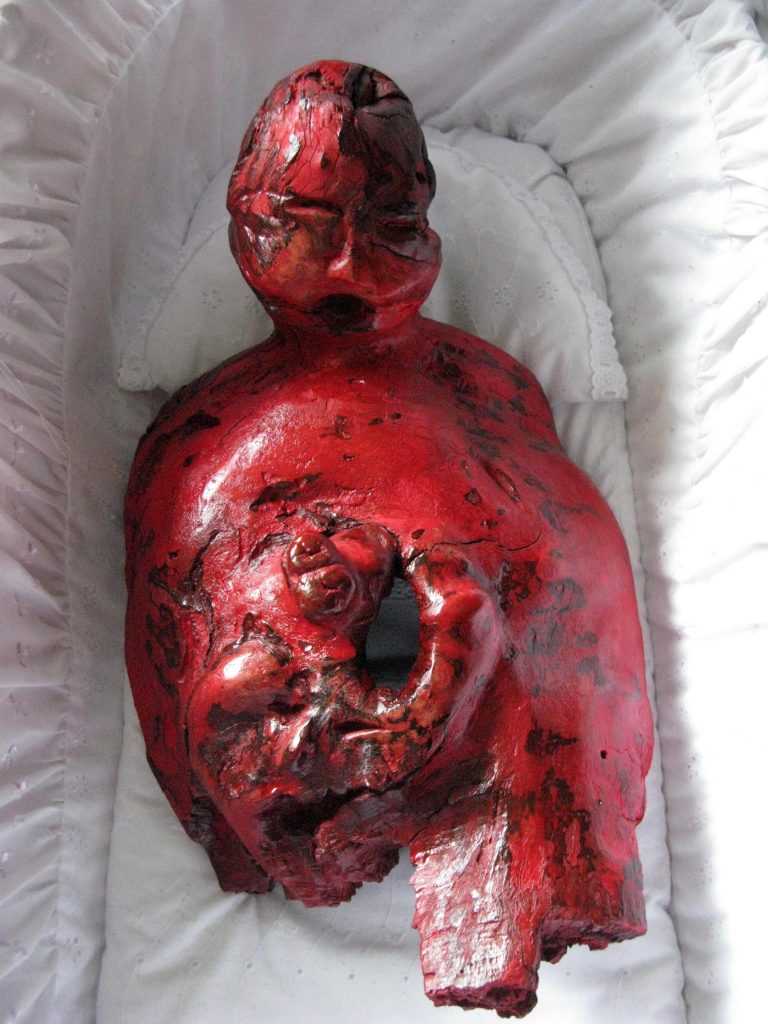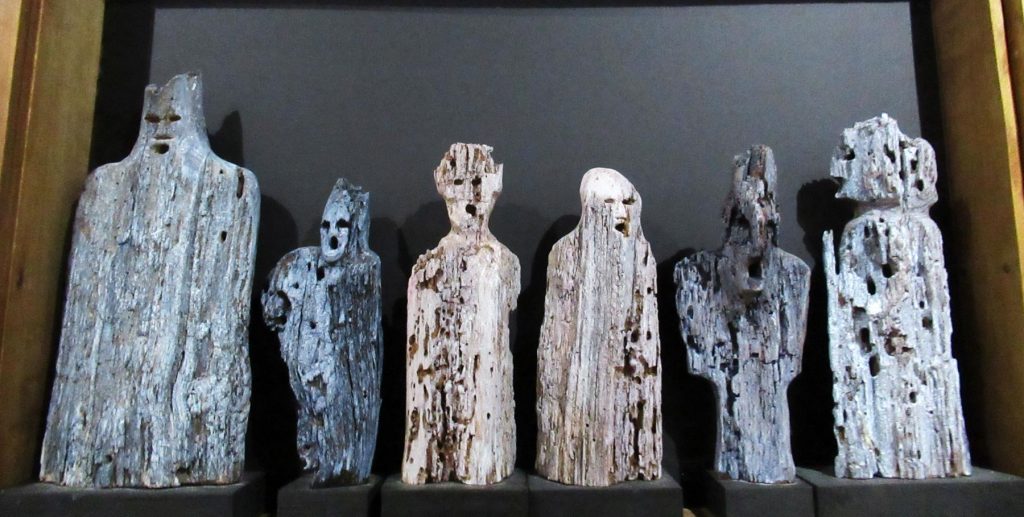When I discovered the first great Inuit sculptors, drowning in the mercantile hodgepodge of white men call “Inuit Art,” I experienced a shock that opened my eyes to what I’d never been aware of seeing since childhood, as if the diabolical and human figures of the Middle Ages found their prehistory in the shamanic transformations sculpted centuries after themselves. I realized that statues had always surrounded me, the sculpted wooden facades on the medieval houses in the old city I walked through every day to go to school, the Atlas figures holding up the organ in the cathedral and even in my room where a woman in marble, seated beside a well, provided an impregnable fortress to the naïve figurines representing First Nations.
In working half-rotten pieces of wood collected in the forest, I tore myself away from this memory of stone to give shape to more contemporary threats of destruction, yielding to the rotting of the wood to extract what could still be saved, “shadows of wood” that I display in wooden boxes like relics.
Patrick Cady













